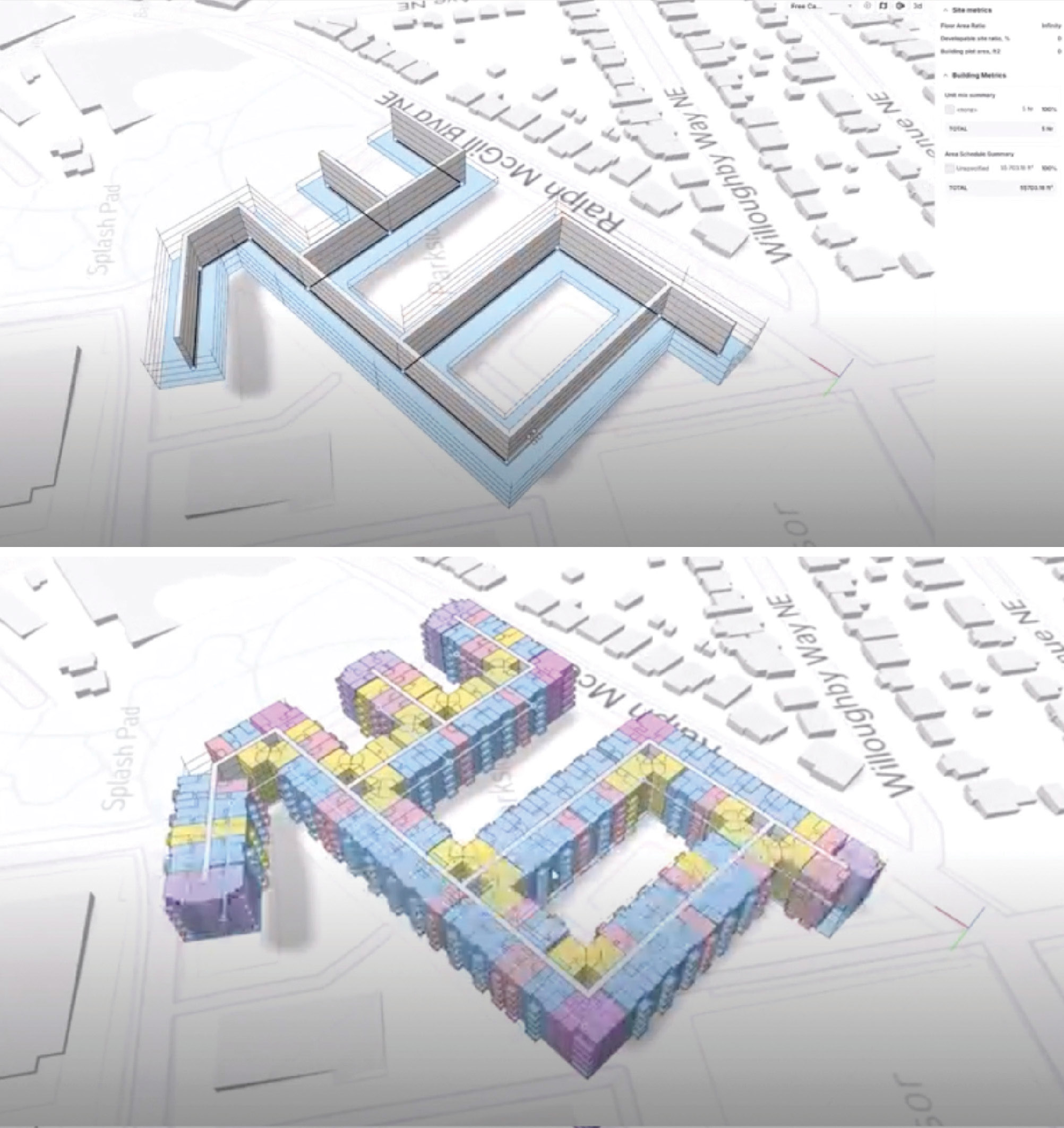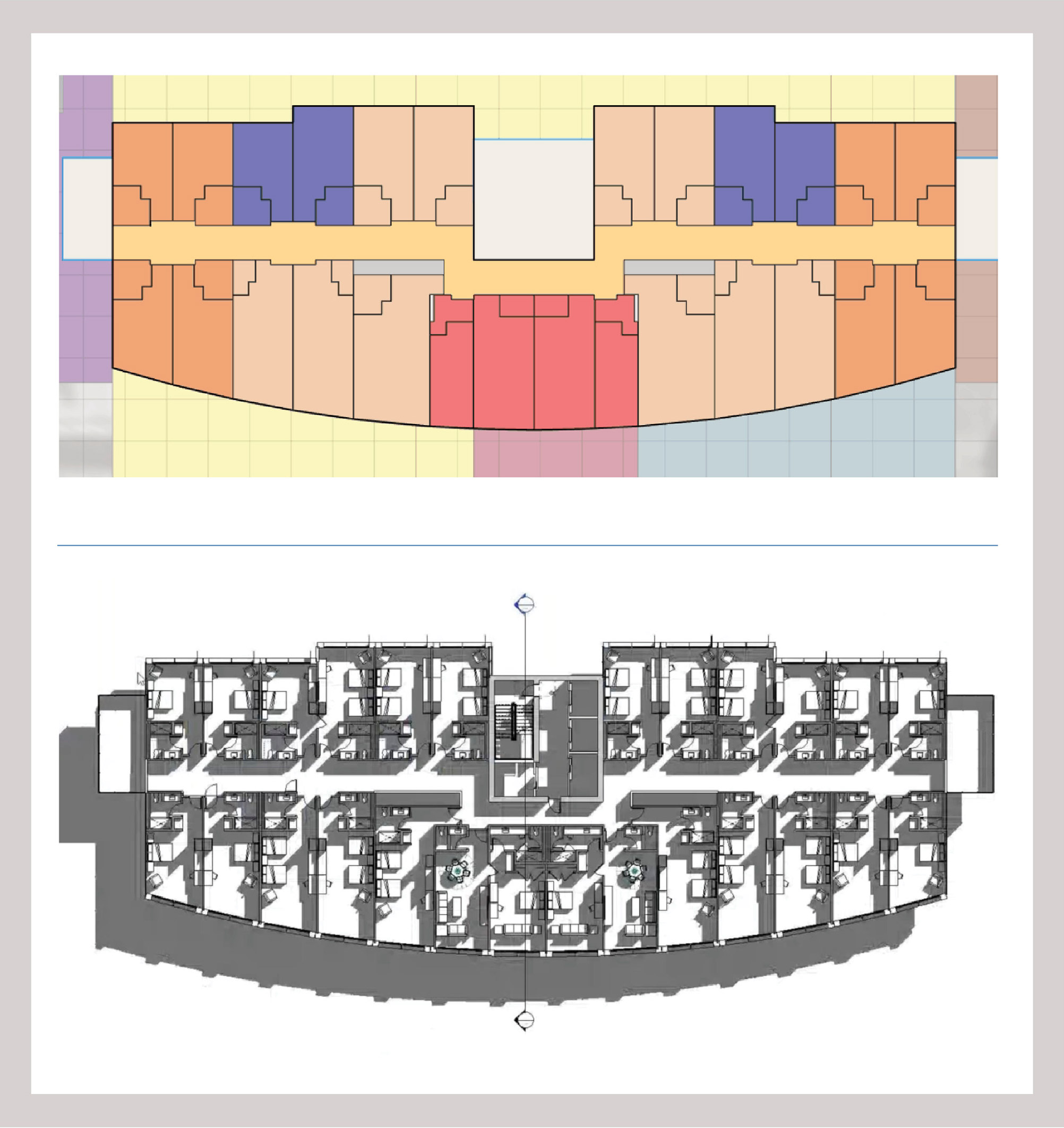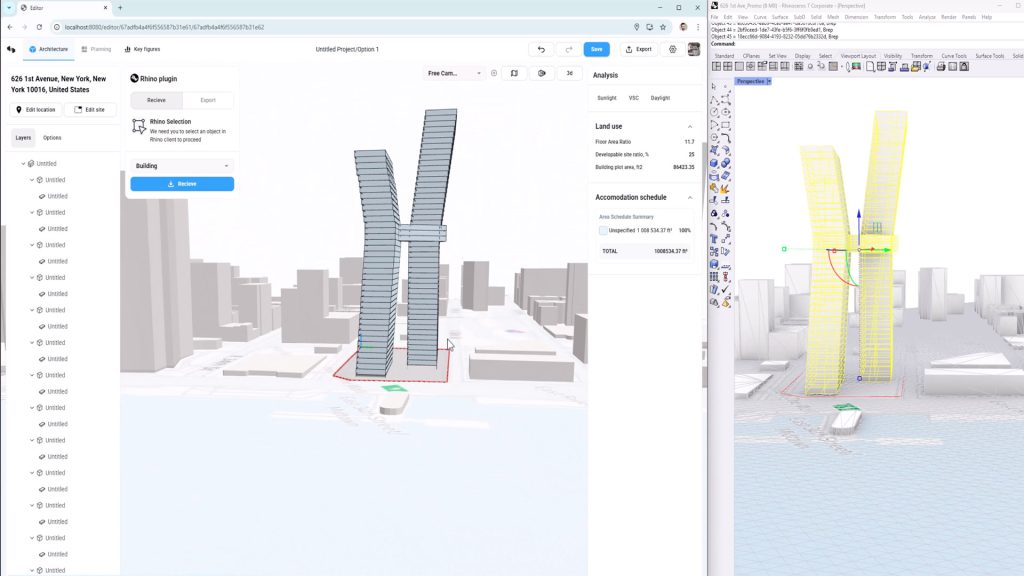Rethinking the system of record in AEC by Marty Rozmanith, Skema
True industry disruption rarely comes from a single new technology. More often, it’s the convergence of multiple innovations that reshapes workflows and drives meaningful change. Ai is clearly one of the most influential technologies in this mix — and it’s now being woven into nearly every aspect of software and hardware development.
For decades, AEC firms have relied on BIM tools like Revit to serve as their system of record —the authoritative home for the design data that produces the record drawings in the permit set. But anyone who has tried to open a ten-year old Revit file knows the well-worn hassles and limitations of that process. At Skema, we believe it’s time to shift to something more robust for leveraging your previous work.
We’ve been quietly working on something different: a new system of record based not on documents or exports, but on design knowledge — curated, reusable, and deeply integrated with your firm’s existing BIM practices. This system lives in what we call the Skema Design Catalog. It turns your prior projects into building blocks — semantically rich assemblies that can be reused, adapted, and reassembled with modern computational tools. It’s a fundamentally different approach than simply storing BIM data. It’s about curating design intelligence.
Find this article plus many more in the July / August 2025 Edition of AEC Magazine
👉 Subscribe FREE here 👈
Why design catalogs matter
We’ve all heard the complaints: “Our Revit files are a mess.” It’s true — BIM data often resembles a cluttered garage, where even valuable assets are buried in inaccessible forms. But that doesn’t mean this data is useless. At Skema, we’re developing targeted machine learning techniques to help firms extract value from their design history. Our tools identify whole reusable layouts and assemblies from your past work, forming a searchable, reusable library of designs ready to deploy.


What’s crucial here is that this isn’t generative AI hallucinating pictures based on internet training. The Skema Design Catalog uses your own project data — authored by your team, proven in practice — and applies AI only as an assistant to help structure and curate that knowledge.
Your IP stays your IP.
We’ve been vocal about this distinction because, unlike many software vendors racing to scrape and remix user-generated content to train opaque models, Skema is designed to protect your intellectual property. We don’t ingest your models into some centralised AI hive mind. We help you build a trusted, firmspecific knowledge asset. BIMnesia: what your models forgot and why it matters Opinion
From conceptual design to production-grade BIM
The idea of toolchains is central to our philosophy. We’ve moved away from the idea of Skema as a standalone conceptual tool. Today, it’s more like a Swiss Army knife — a focused, interoperable set of capabilities that work with tools you already use. Our integrations with SketchUp and now Rhino let you stay in familiar environments while accessing the power of curated BIM data. And there is no need for a team of BIM-jockeys to then re-enter the data in Revit all along the way, since we have integrated the approach.
This integration-first approach means you don’t have to relearn your entire workflow. Skema sits in the middle of the pipeline, enabling higher-quality design outputs without forcing you to abandon the tools that work for you. The result is a toolchain that’s greater than the sum of its parts. Think Rhino for expressive geometry, Skema for data-aware layout and BIM curation, and Revit for final design, documentation and drawing sets. Each tool does what it does best, and Skema links them together
Advanced workflows and solvers
Behind the scenes, we’ve been building an advanced ‘solver architecture’ where you can inject your own logic into our layout engines. These graph-based engines can automate layout and morph spaces based on real architectural design data—not just simplified shapes or boxes. And we have been working with leading AEC firms that are pushing the envelope in modular design and design for manufacturing.
Together these three legs of the stool — design catalogs, toolchains, and solvers — unlock a new design workflow—fast, flexible, and grounded in practice.
Not a platform
We deliberately avoid calling Skema a platform. Why? Because it is not our goal to charge firms for access to their own data or impose a new model standard. Skema isn’t trying to replace BIM tools — it’s connecting them with purpose. Skema’s role is not to become the next Revit or Rhino — but to make those tools work better together, to make your data more usable, and to do it in a way that’s fast to learn and simple to apply.
Skema is a ‘fast-forward’ button for your project team. Skema is not a collaboration platform even though we are used for collaboration all the time. Rather, Skema is designed to work with whatever collaboration environment you use today (or tomorrow).
This approach is shaped by feedback from real users. As one customer put it: “You’re letting me reuse what I already know and already trust.” That’s the point. We’re not trying to replace human expertise. We’re helping you operationalise it.
Your data. Your terms.
There’s a growing concern in the industry about how software vendors are using customer data to train AI systems. At Skema, we’ve taken a hard stance: your models remain private. Our machine learning features operate within your own environment, curating — not consuming —your design history.
This matters. Your design work isn’t just geometry. It’s judgment, collaboration, negotiation. It’s intellectual property. And increasingly, it’s your competitive edge. Skema is here to help you protect it—and put it to work.
About the author
Marty Rozmanith is a co-founder of Skema and a long-time innovator in BIM and AEC software. Before starting Skema, he helped lead the development of Revit and has spent his career at the intersection of architecture, computation, and construction.
Recommended viewing
Learn more about Skema 2025. At NXT BLD Marty Rozmanith explored smart toolchain integration, reusable design intelligence, and zero-code generative design.
CLICK HERE to watch the whole presentation
Watch the teaser below
Main image: According to Skema, thanks to its integration with Rhino, architects and designers can evolve Rhino designs into highly-constructable and trusted BIM models — without scripting, manual remodelling, or any loss of design intent.







